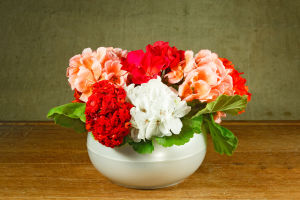Flowers are one of nature's most beautiful wonders, captivating people and insects with their vibrant colors. But have you ever wondered why flowers come in various hues? In this article, we'll explore the formation of flower colors from a scientific perspective.
It turns out that flower petals contain various pigments, which are responsible for the array of colors seen in flowers.
The primary pigment responsible for creating the colors of flowers is called "anthocyanin," which is distributed within the vacuoles of cells and controls colors ranging from pink, red, and purple to blue. Anthocyanin is quite playful; it can form different colors under different conditions.
In acidic solutions, it appears red, with stronger acidity resulting in deeper red hues, such as in roses. In alkaline solutions, it appears blue, with stronger alkalinity resulting in blue-black shades, as observed in ink chrysanthemums or black peonies. When in a neutral environment, it appears purple, as seen in bellflowers, for example.
Even more intriguing is that some flowers can change colors thrice daily. For instance, morning glories start pink, turn purplish-red, and finally blue. This color transformation is due to changes in the pH value within the vacuoles of petal epidermal cells, causing anthocyanin to change accordingly.
Although anthocyanin plays a significant role, it's not the sole determinant of flower color. Another group of pigments widely present in petals is carotenoids. These pigments, with over 600 identified types, can produce colors ranging from yellow, orange-yellow, to orange-red, resembling the color of carrots. For example, the yellow petals of buttercups contain carotenoids as the primary pigment.
Furthermore, other pigments like flavonoids, quinone pigments, betalains, etc., also affect flower colors. The diversity of flower colors arises from variations in the types and proportions of pigments in different plant species. White flowers lack pigments in their cell sap, while green flowers contain chlorophyll.
Thus, while pigments play a crucial role in determining flower color, other factors, such as differences in petal tissue structure affecting light refraction and reflection and ecological factors like light intensity, temperature, humidity, and soil nutrient content can also influence flower color.
These factors can affect the pH of petal cells, enzyme and sugar content, stability of anthocyanins, and even alter the molecular structure of some pigments, resulting in a wide range of flower colors.
From the above discussion, it's evident that the formation of flower colors is a complex and intricate process involving multiple factors. Flower colors provide aesthetic pleasure and aid plants in pollination and adaptation to their environment. The diversity of flower colors is a marvelous phenomenon in the natural world, worthy of our appreciation and exploration.


